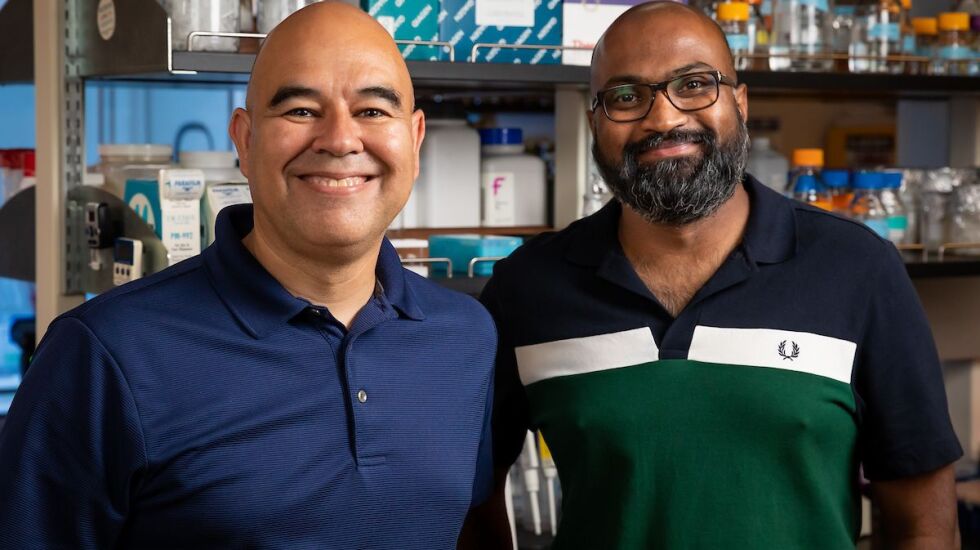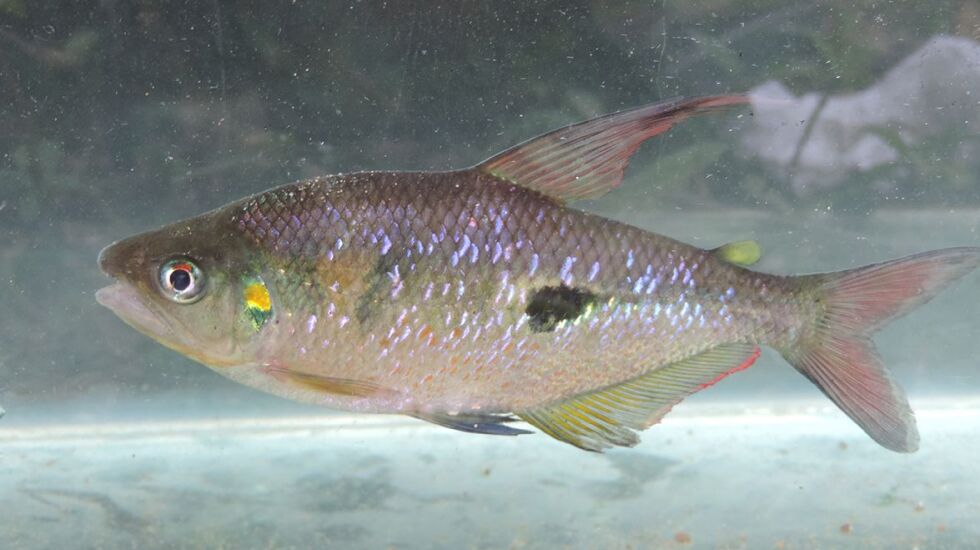
It’s a long way from field work with two species of the characid genus Rhoadsia in Ecuador to creating genomes for them in research labs at DePaul University.
But that’s what Windsor Aguirre, professor of evolutionary biology, and Thiru Ramaraj, an assistant professor in the School of Computing, are doing in a collaboration through a University Research Council collaboration grant.
“It does seem odd, but it is becoming more common,” Aguirre said. “Scientists are very specialized, we know. Often learning how the world works is putting pieces together. We speak slightly different languages, but we try to translate those languages.”
“For me, it is exciting, I learn something new,” Ramaraj said. “I always learn something new on the biologist side of things, which I find exciting. Research is becoming more collaborative. It is a little bit challenging. We kind of speak a different language.”
Ramaraj has worked on computation with DNA sequencing since 2005 on plants, bacteria, viruses and some human data.
“I have not worked with fish genomes before, so this is really exiting,” he said.
Stay with me as I wade waters deeper than usual for me.
One part of this appeals because multi-discipline cooperations, such as this between a biologist and a computer scientist, are important in an increasingly specialized world.
In the outdoors, I think it would be very helpful if biologists and botanists collaborated with social scientists (and communication professionals) in making their knowledge, data and charts more understandable and accessible to the public.
Genomes, a relatively new area, are blueprints, the entire set of DNA instructions in a cell. The international human genome mapping project, under Francis Collins, produced a human genome sequencing for 90 percent of human genome in 2003 (completed in 2021).
The characid genus Rhoadsia, doesn’t really have a common name though it is known as rainbow Characid in the aquarium trade, is endemic to portions of Ecuador and Peru.

So how and why are DePaul profs involved with an obscure fish in Ecuador?
“My family was from Ecuador originally and I started working that region,” Aguirre said. “A lot of people are living in that area. I saw an opportunity to do something productive and useful.”
He has researched Ecuador’s freshwater fish since 2008 and calls it a “global biodiversity hotspot.” Important since he studies how organisms adapt, especially in areas being devastated by human development. One thing that is becoming more apparent is that fish are adapting much more quickly than expected to environmental changes.
“That is different than Darwinian evolution,” Aguirre said.
In this collaborative work, he collects the samples, tissue samples and isolates the DNA and sequences the DNA.
Ramaraj works with the data. Since the development of the human genome, an incredible amount of data has been generated, “millions and millions of data sets.”
He noted that amount of data, referred to as “big data,” requires special analytical skills. That’s much like that used in advanced business intelligence. This isn’t high school math. This is a new area in computing and statistics. They will use existing databases along with the data they generate.
“Most of the tools are primarily based on human sequence data,” Ramaraj said. “We will have to make some tweaking [for these fish].”
“By having more genomes, it is easier to fill in the gaps and see how it works,” Aguirre said.
I dream of the day a DePaul student uses genome sequencing in studying the fish of the Des Plaines, Chicago and Calumet systems, which endured monumental environmental change, backward and forward, over the last 150 years.







